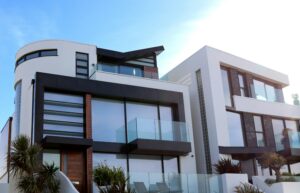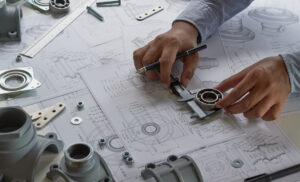 The 179D Energy Policy Act certification calculates the tax deduction achieved from the installation of energy-efficient assets, including HVAC, building envelope and lighting. The building may qualify for up to $1.80 per square foot for commercial building and residential structures that are at least four stories. The deduction includes both new construction and improvements of new lighting, HVAC units, roofs and windows.
The 179D Energy Policy Act certification calculates the tax deduction achieved from the installation of energy-efficient assets, including HVAC, building envelope and lighting. The building may qualify for up to $1.80 per square foot for commercial building and residential structures that are at least four stories. The deduction includes both new construction and improvements of new lighting, HVAC units, roofs and windows.
Total annual energy and power costs with respect to the interior lighting systems, heating cooling ventilation and hot water must be reduced by 50%, though a partial deduction of $0.60 per square foot can be taken for reduction of energy consumption through the building envelope, HVAC and lighting. Additionally, a partial deduction from $0.30 to $0.60 per square foot can be taken for a 25-40% reduction in lighting power density (50% for warehouses).
CARES Act Provision Enhances 179D Tax Deductions
As part of the Coronavirus Aid, Relief, and Economic Security Act (CARES Act) signed in March 2020, the largest emergency aid package in U.S. history, Congress approved a five-year carry-back option for net operating losses (NOLs). This new carryback option means that property owners should work with their specialty tax services provider to review all 179D tax deduction opportunities to generate immediate tax savings and potential retroactive refunds.
What Property Qualifies for the 179D Tax Deduction?
Property must be placed in service (new construction or renovation) after January 1, 2006 through December 1, 2020, and meet ASHRAE standards. Property includes:
- Commercial buildings (any size)
- Apartments, four or more stories, for lease
- Commercial energy renovations
See the full details for qualifications by lighting, HVAC and building envelope.
Who Qualifies for the 179D Tax Deduction?
- Property owners: If you own a commercial building that was built (or substantially renovated) after January 1, 2006, your property may qualify.
- Commercial tenants: If you own assets, such as the HVAC or lighting being depreciated, you may qualify.
- Architects/Engineers/Designers: If you are responsible for the design of a building or renovation owned by a government entity, you may be entitled to a large tax deduction. Government-owned building can include schools, libraries, airports and military bases, among others.
What Are the Steps to Qualify for the 179D Tax Deduction?
The IRS requires that there be a third-party verification of the existence of the building and that it is built to the specifications that were modeled for energy efficiency. An energy simulation is required to justify the deduction; the inspection and testing must be conducted by a qualified engineer or contractor registered within the jurisdiction.
The builder must provide:
- Current full set of architectural plans that include all specifications
- Energy compliance documents for lighting, HVAC and envelope (Title 24 or IECC)
- EnergyPro File – computer file used to generate T-24 documentation
- A contact person and phone number
See our 179D Energy-Efficient Building Tax Deduction FAQs!
The ETS 179D Tax Deduction Qualification Process
Upon qualifying, ETS will provide you with a summary of compliance with a Department of Energy certified software and engineer or contractor verification documentation. According to your preference, ETS will provide all documentation in either paper or electronic format. The 179D deduction is taken on the “Other Deductions” line of the taxpayer’s returns. According to the recent NOL changes, the tax return may be amended going back five consecutive years.
Handling over 100 certifications per month, ETS has perfected the 179D qualification process by working closely with the IRS. We have provided thousands of Energy Policy Act tax certifications since 2005. Our precise documentation meets and exceeds the standards required by the Department of Energy and the IRS, and it has consistently withstood the toughest scrutiny. With LEED-accredited professionals on staff, we have worked with Fortune 500 companies, top 100-ranked CPA firms, national real estate firms, international architects and some of the top lighting firms in the nation.
To learn more about how ETS is helping clients take advantage of valuable energy-based tax benefits like the 179D tax deduction, or to request detailed information, contact us at 800.236.6519 or visit our 179D Tax Deduction page for more information.




